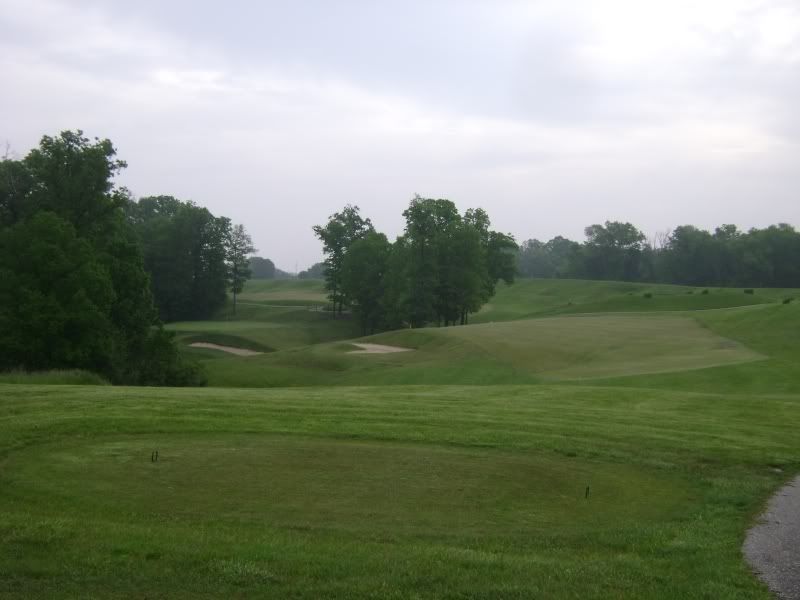Arguably the most scenic golf course in the state of Indiana resides in the small town of Jasper. Sultan’s Run is a layout that originally opened in 1992 and after Tim Liddy’s work in 1996 has been on the tip of everyone’s tongue that has seen it since. It is an incredible value and one of the top public courses in the state. It uses Liddy’s style of design and adds in dramatic elevation changes to provide some eye-popping holes.
But what else could be expected of this land. The horse farm that originally ran over the site was the home of perhaps the greatest standardbred sire in history, Supreme Sultan. As a reminder of all the great horses produced by the stallion, many of the holes are named in honor of the champion’s progeny. Much like the standard of excellence produced by its namesake, the course has been recognized continually for its merit.
As with his other offerings at The Trophy Club and Rock Hollow, Liddy put together a winning formula at Sultan’s Run. The course features an unbelievable site along with some of Liddy’s best design work.
The use of water by Liddy is significant as half of the holes are impacted by it in some form or another. Ponds are the primary tool used by Liddy on the par threes, but there are streams on a few holes. An inventive use of a natural rock formation and a retention pond on the final hole create what Sultan’s Run calls the best of a round of signature holes. Liddy also uses the water in coordination with some stark elevation changes to create some wonderful vistas showing off the gorgeous sweeping terrain of Southern Indiana.
Liddy did a fine job in finding the best location for each hole, with only a couple feeling like they were just transition holes to piece together the routing. His ability to use the terrain to provide uphill and downhill shots equally is a great quality. It also helps to make Sultan’s Run more than just a pretty golf course. When combined with the complex putting surfaces and devious bunker schemes that Liddy employs it makes for one of the best courses in the state.
Holes of note:
Hole 3 – 339 yards - The third runs along a ridge to the right with the hole running from the higher ground towards the lower left area. The green is then benched into the ridge line and is a beautiful setting for a hole. A view from behind shows just how much the player has come up hill by the time they finish the hole and Liddy shows another wonderful element of his design, camouflaging terrain movement.

Hole 6 – 493 yards - Also, a hallmark of Liddy courses are the thrilling par five holes. Sultan’s Run is no different. The sixth is an excellent risk-reward par five that runs along the edge of a ridge and around a large waste bunker. The left side of the fairway just seems to skin the high part of the ridge so than anything less than perfect will run down to the lower elevations of the fairway. The green is perched on the ridge at the end of the hole and rejects anything less than well-struck shots. The amount of movement in the hole’s terrain is remarkable, as it rolls all the way up to the putting complex.

Hole 7 – 347 yards - The seventh is another excellent short par four that runs from a well-elevated tee to a rolling fairway below that then leads to a downhill approach into a plateau green. It could be argued that this is one of Liddy’s trademark hole styles, but each time it shows up, there are some subtle differences. On this version the terrain violently shifts from the tee to a rolling fairway that provides a small landing zone before another deep ravine occurs. The choice is to either try and land on this narrow strip or just bomb it from the tee and take your chances on where you end up at the bottom of the ravine and play from there. Either way, Liddy forces you to make a solid swing or you will be flirting with disaster.

Hole 8 – 325 yards – The next hole has no bunkers or water between the tee and green. All that Liddy uses as a hazard is ground contour. At just the point where one wants their drive to land, the fairway amazingly narrows and the left side becomes a series of hummocks and hollows covered in grass. Finding a level lie for a short iron into the green is unlikely at best. Again Liddy presents the challenge of execution from the tee to provide a reasonable shot into the green.

Back nine on next post